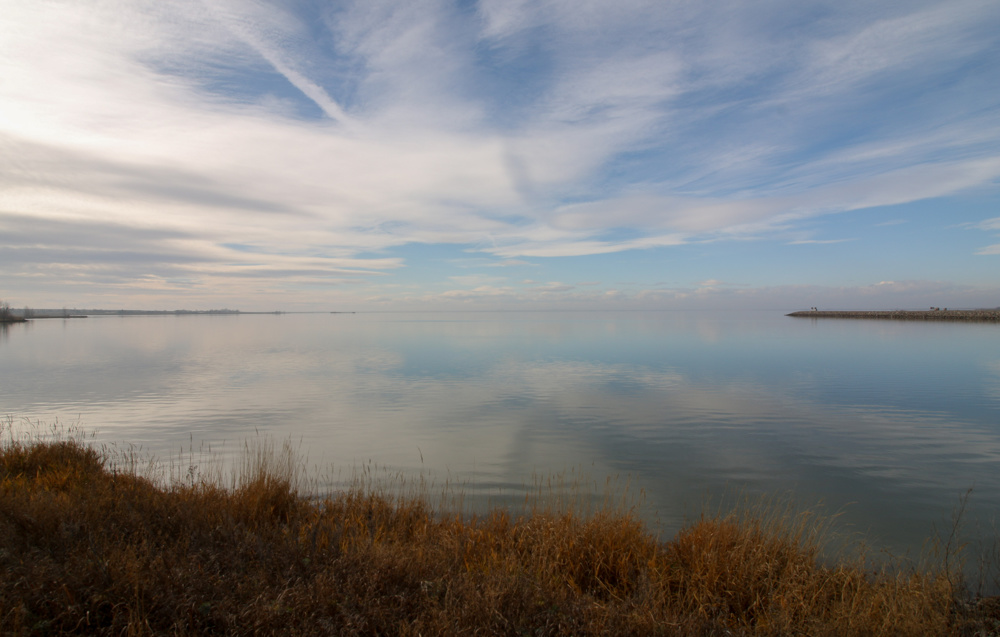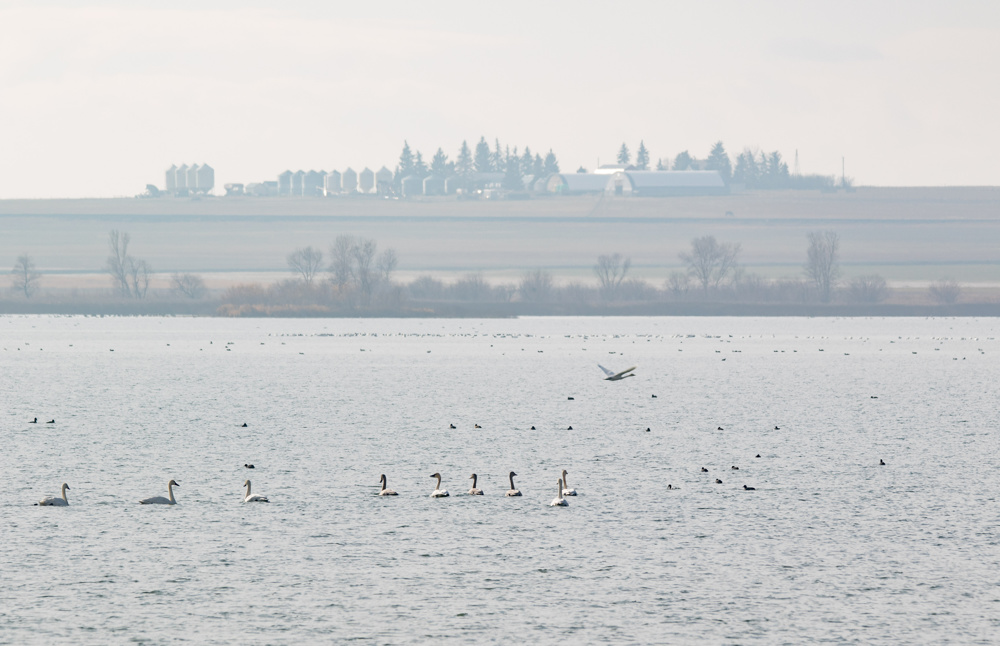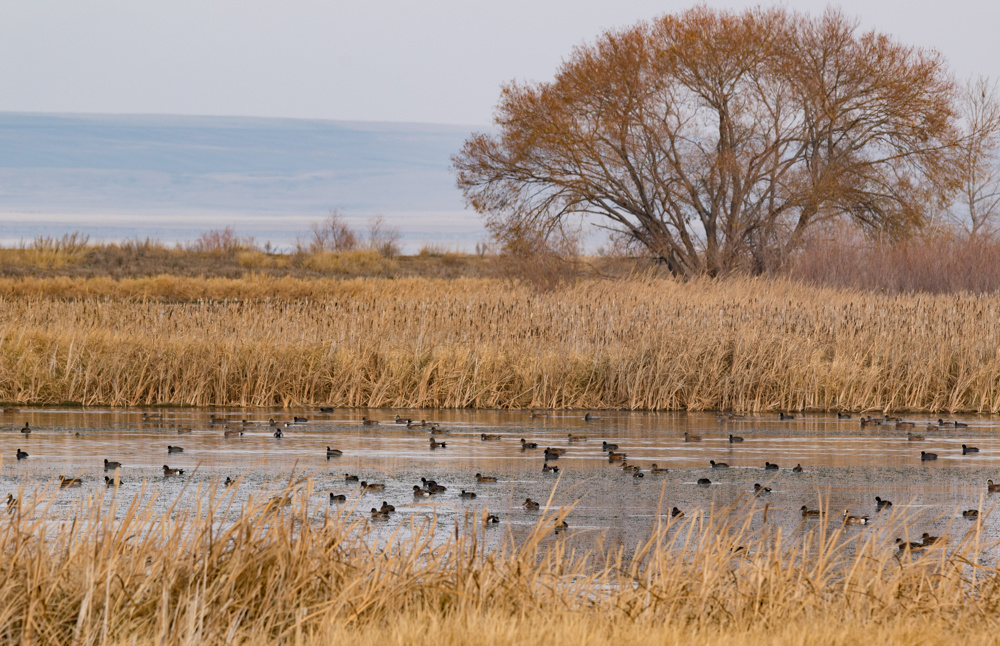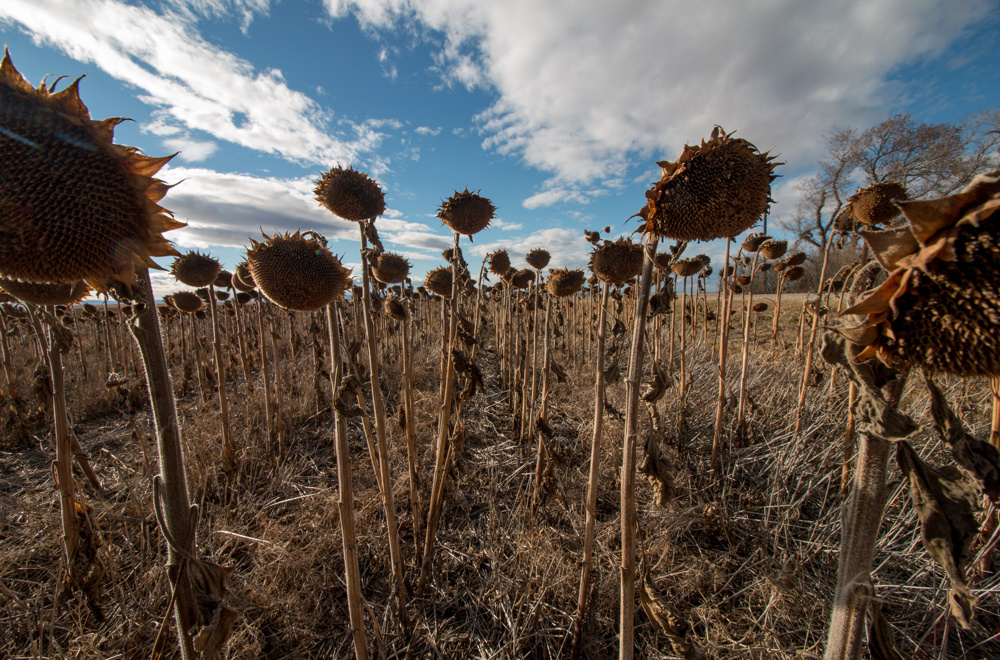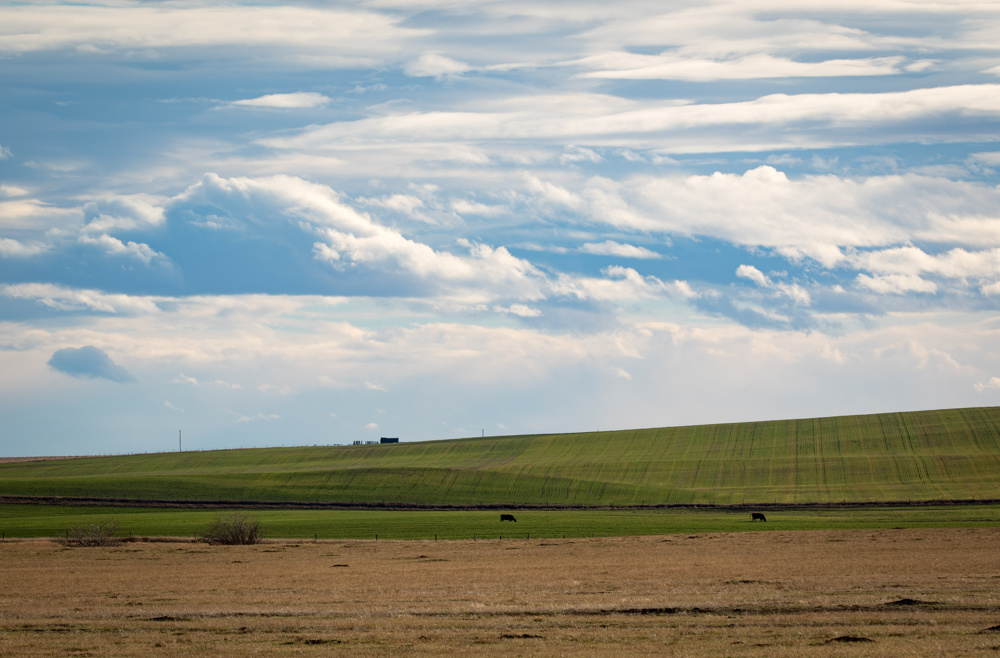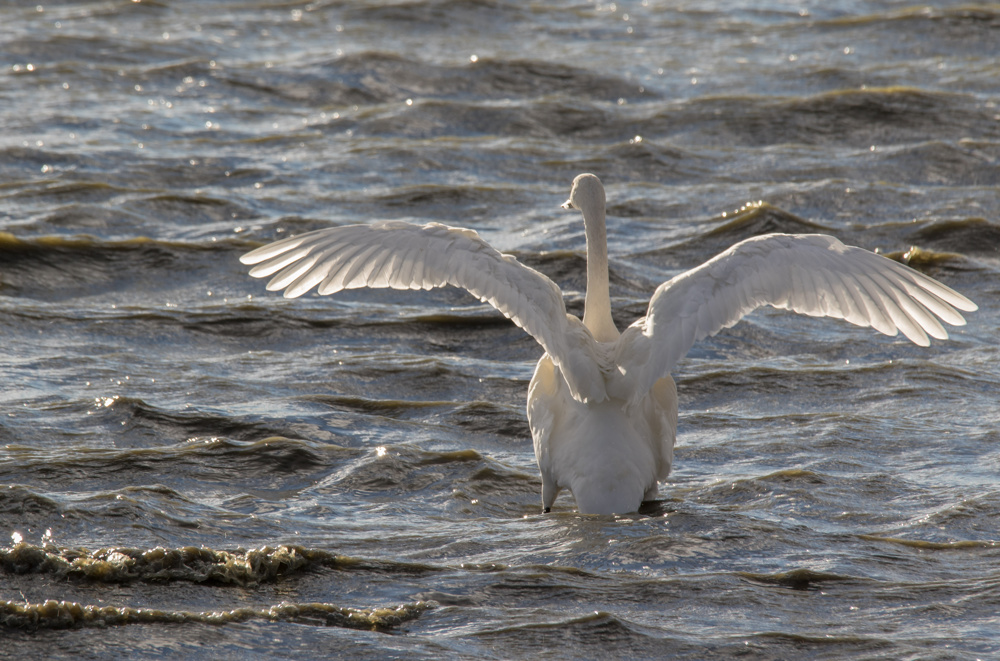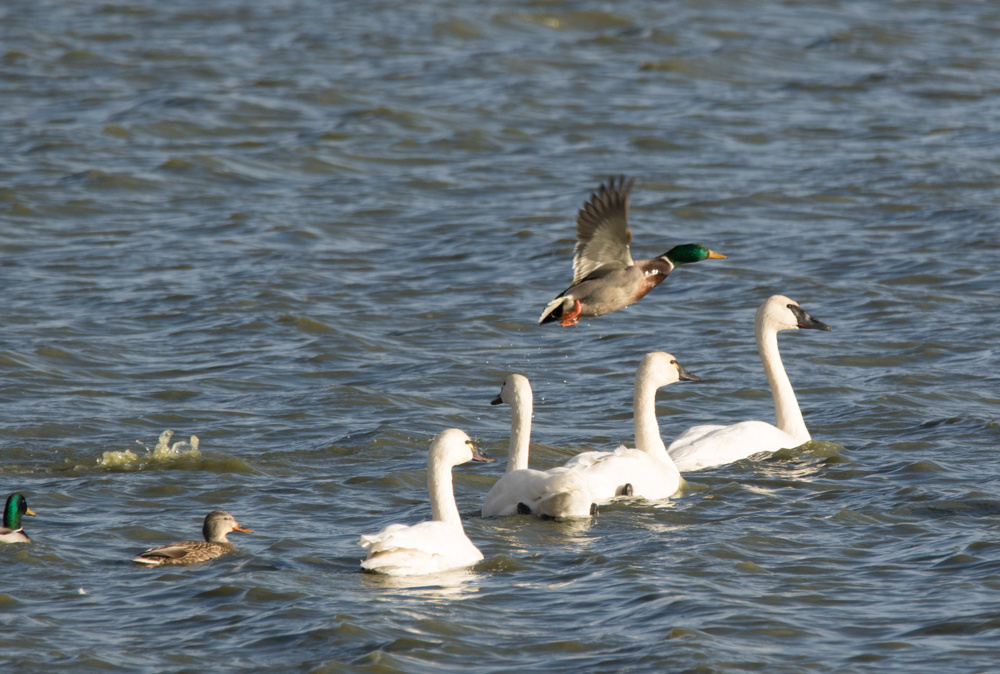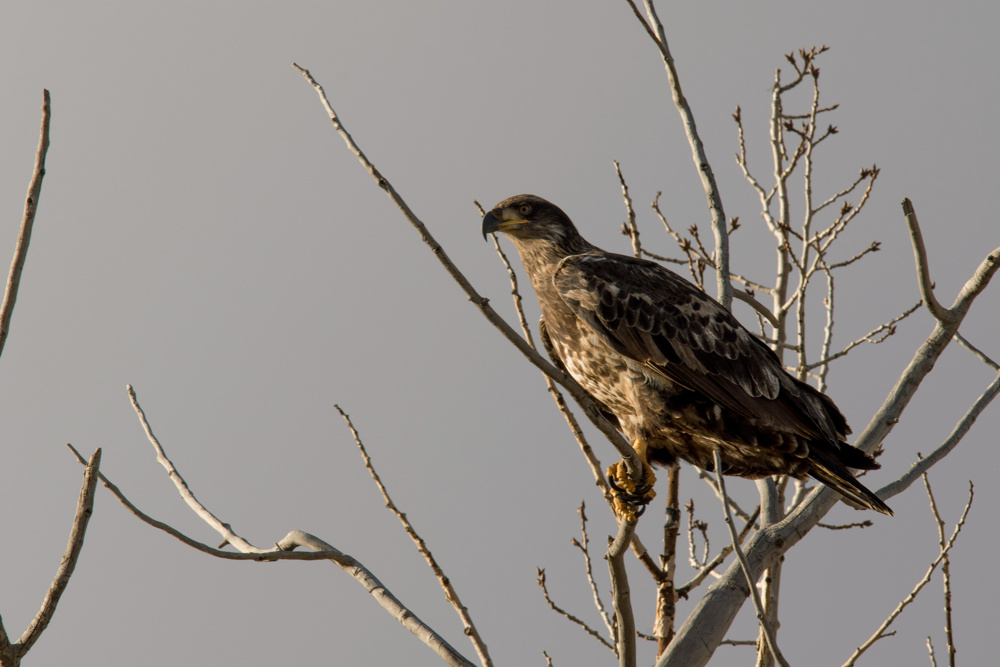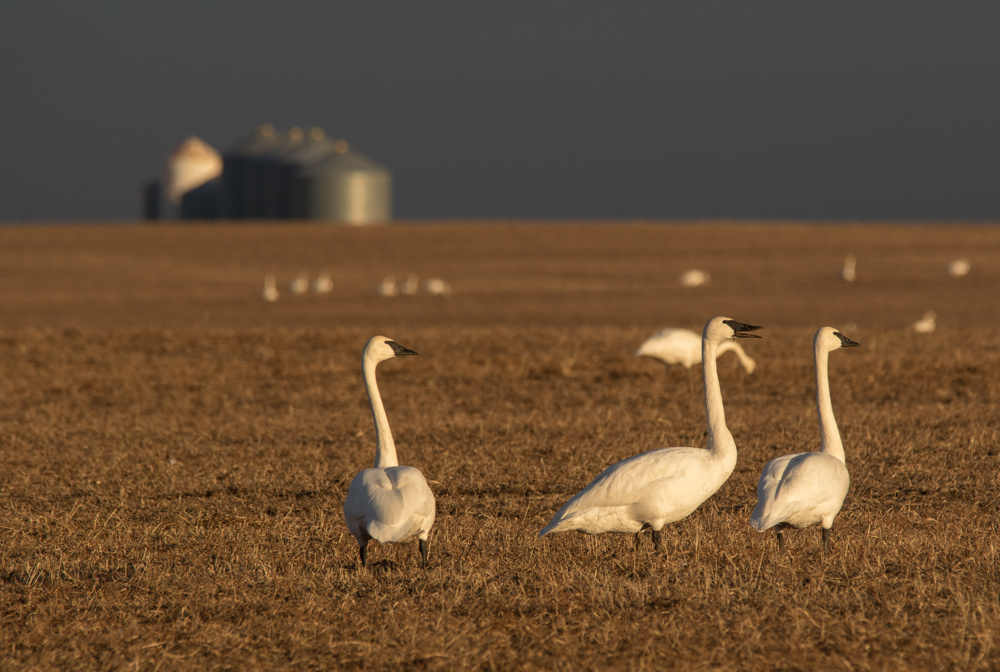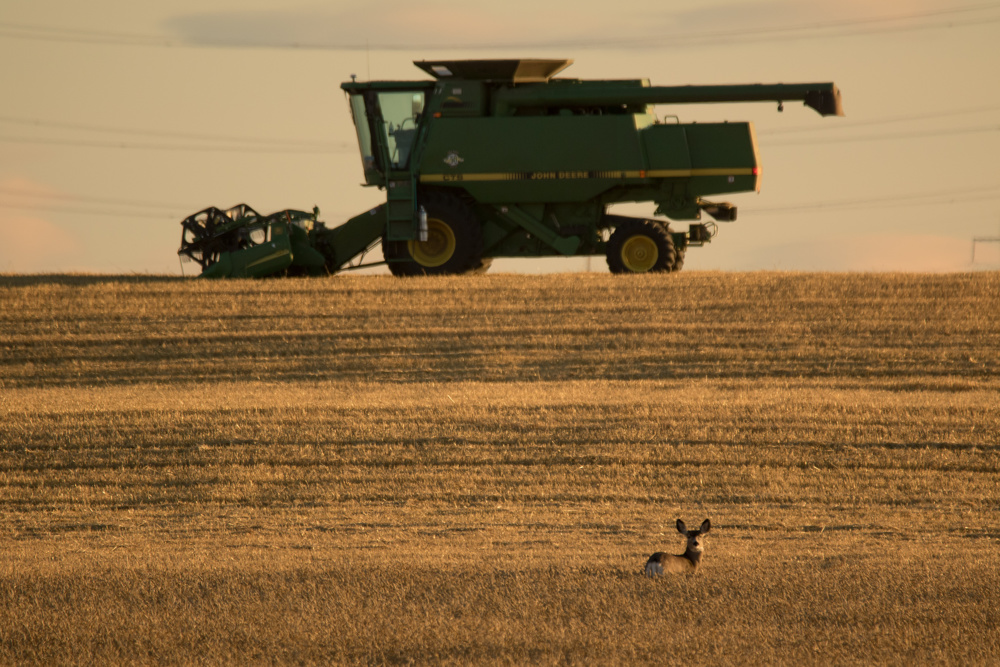The fog was thick by Big Hill Springs, thicker by Madden.
I could see maybe four car-lengths in front of me, the line of hills just to the east of Big Hill Springs obscured in the heavy mist. The Madden golf course to the west of the road was completely invisible.
I was headed north to nowhere in particular, just aiming into the mist and …
Okay, hang on a second. This is starting to sound mighty familiar.
A week ago I’d been heading out into pretty much the same thing. The fog was thick in the city and thicker the further I got beyond the limits. The only real difference was this time I was headed north instead of east.
But the results were the same. Pretty tough to shoot pictures of things you can’t see.
So just north of Madden I turned and headed for Airdrie. I didn’t know what I’d be able to see over that way either but there wasn’t much point in continuing on my present trajectory.
And then, just as I approached Highway 2, I had one of those head-slapper moments and pulled over to the side of the road. Still surrounded by fog, I fished my phone out of the detritus on the floor of my truck and hit the home button.
There I saw glowing at me an icon, blue with a little sunburst peeking out from behind a cloud. I tapped it and it sprang to life.
Before me unfurled a list that I had compiled over the years of places I was interested in, places I’d been. And for each of those places it showed the current weather conditions.
Irkutsk, Istanbul and Buenos Aires were a little beyond the hours of daylight I had left. But Vulcan wasn’t. I tapped on the name.
It was still foggy all the way there but an hour and a bit later I rolled over a rise and saw the town in front of me in the rapidly thinning, silvery mist. A line of clouds rose into a soft blue sky. The sun was peeking out from behind one of them, just like the app said.
The fog was thin by Champion, thinner at Carmangay. By Barons it was all but gone.
It was still a little misty, though, at Keho Lake and the swans that were gathered there swam across waters that shimmered with silver. The shallow west end of the lake was full of the big white birds, tundra swans stopped here on their way south. Their chirps and peeps carried through the nearly-still air, mingling with the laughs of mallards and barks of coots and trucks passing on the highway close by.
The southern shores held flocks of widgeon, teal and pintails. Harriers hunted along the edges while a bald eagle flew by overhead. There were fishermen at the east end where the irrigation canal exits the lake. The water was like a mirror, the horizon blending perfectly into the sky.
It was warm here, too, and the air smelled almost spring-like. It must have rained or snowed some time in the last few days as the roads were muddy and puddles sat in the low spots but the sun was pushing a lot of radiant heat through the clouds and the thin mist that still lingered.
In fact, it was fairly foggy not far to the east. Picture Butte and Diamond City were both obscured. But the valley between Coalhurst and Nobleford was clear.
And green.
This truly is the banana belt of Alberta, hot in the summer, milder than most places in the winter. With irrigation you can grow pretty much anything here. That’s why on the first day of November I found bright green grass and alfalfa, sugar beets with their tops still crisp and green and volunteer mustard still covered with yellow blossoms filling the fields.
It’s not like this every year, of course. November is a particularly nasty month. But on this day with the fog burned off and a freshening chinook wind blowing in from the west, man, what a stunning place to be.
I rolled on west and north and stopped to check out a sunflower field I’d been watching since springtime and found that all the plants were still standing and waiting to be harvested. They were brown and dried out - and a lovely colour against the blue sky - and they rattled in the wind.
A wind that was increasing in velocity by the minute.
Not far from the sunflowers I found cattle grazing on a patch of bright green grain - winter wheat, maybe or some other cover crop - and hung my big lens out the window. The camera shook in the breeze and gusts rocked the truck.
At a slough close by I found more swans swimming and flexing their wings as grey waves crashed around them. Turning their big bodies into the wind they were aloft in just a few sweeps off their wings and as they landed again at the far end of the slough they hung in the air like gigantic white hummingbirds as they settle back on the water.
The day was nearly done by now and I headed north again but the further I went, the lighter the wind became. By Brant it was nearly calm and over by Blackie I found a thousand or so more swans.
They evening light set them aglow against the pea field they were feeding in, a bright beluga white against the brown of the land. They’d flown here from nearby Frank Lake, one of the best places around to see birds of any kind, and they fed on spilled peas, plant roots and anything else they could glean, pretty much oblivious to my presence.
Just like back at Keho Lake, their peeps and chirps filled the air, air so still that I could hear their wingbeats as groups of them passed overhead.
The mountains to the west were nearly obscured by cloud while off to the north I could see that big patches of fog still lingered, the last light of day setting their top edges aglow.
But here all was beauty, the sights and sounds of a late-fall southern Alberta day washing over me. If only I’d come this way in the first place.
Yeah, I could have figured things out a bit better before I left the house but where’s the adventure in that? And besides, you don’t need a weather app to know which way the wind blows.
Sun gone, swans flying back to roost, I headed on home.
